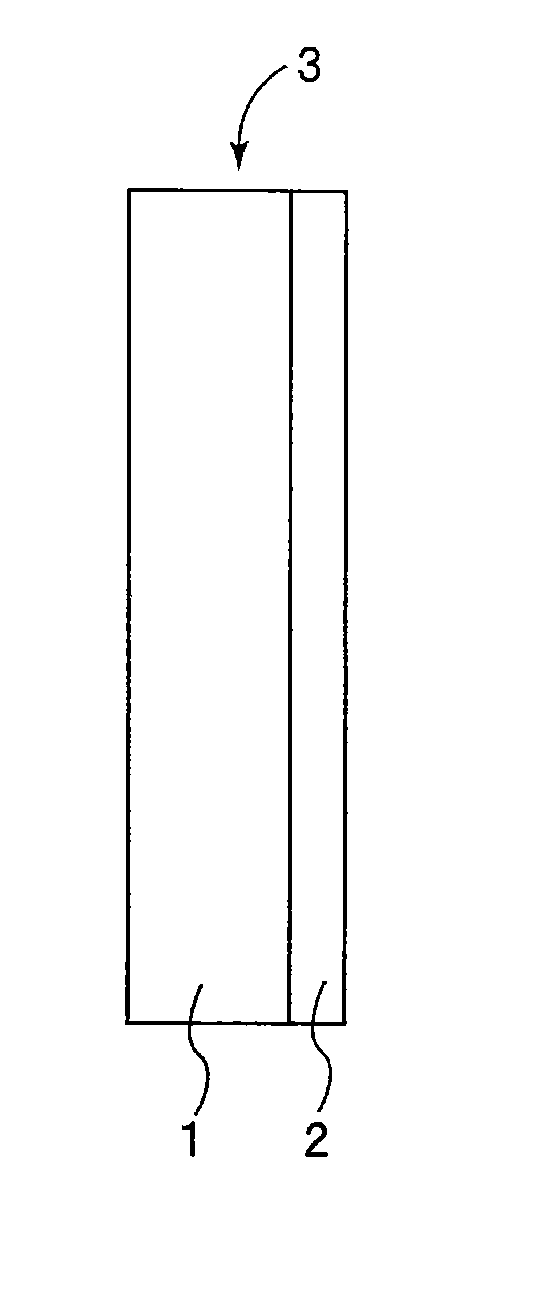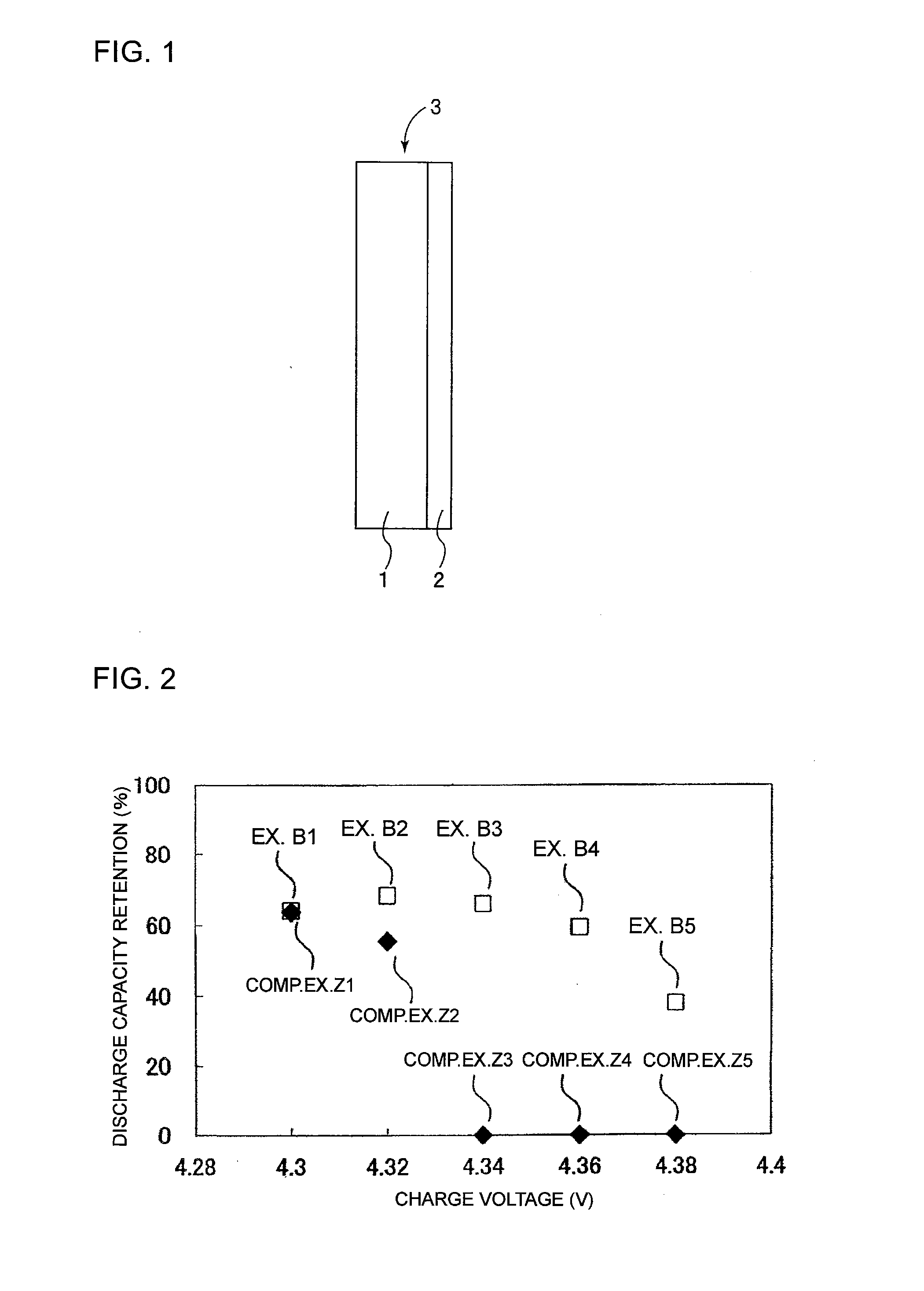Separator for nonaqueous electrolyte battery and nonaqueous electrolyte battery
- Summary
- Abstract
- Description
- Claims
- Application Information
AI Technical Summary
Benefits of technology
Problems solved by technology
Method used
Image
Examples
example a1
Production of Separator
Synthesis of Fluorine-Containing Resin
[0055]In a four-necked flask provided with a condenser and a nitrogen gas inlet, 1.0 mol of 2,2-bis(3,4-dicarboxyphenyl)hexafluoropropane dianhydride and 0.95 mol of o-tolidine diisocyanate were mixed with N-methyl-2-pyrrolidone (NMP) to give a solid content concentration of 20% by weight, and 0.01 mol of diazabicycloundecene was added as a catalyst to the mixture. The mixture was stirred and allowed to react at 120° C. for four hours.
[0056]The solvent-soluble polyimide resin thus obtained had a solid content concentration of 20% by weight and a logarithmic viscosity of 0.7 g / dl, and the content of fluorine atoms in the resin was 18% by weight.
Preparation of Application Liquid
[0057]Next mixed were 10 parts by weight of the obtained solvent-soluble polyimide resin solution (solid content: 20% by weight), 12 parts by weight of polyethylene glycol (trade name “PEG-400”, manufactured by Sanyo Chemical Industries, Ltd.), 40 par...
example a2
[0073]A separator was produced in the same manner as in Example A1 except that the polyimide resin and titanium oxide were mixed to give a ratio of 10 parts by weight of polyimide resin to 90 parts by weight of titanium oxide in the porous layer.
example a3
[0074]A separator was produced in the same manner as in Example A1 except that the polyimide resin and titanium oxide were mixed to give a ratio of 15 parts by weight of polyimide resin to 85 parts by weight of titanium oxide in the porous layer.
PUM
 Login to View More
Login to View More Abstract
Description
Claims
Application Information
 Login to View More
Login to View More - R&D Engineer
- R&D Manager
- IP Professional
- Industry Leading Data Capabilities
- Powerful AI technology
- Patent DNA Extraction
Browse by: Latest US Patents, China's latest patents, Technical Efficacy Thesaurus, Application Domain, Technology Topic, Popular Technical Reports.
© 2024 PatSnap. All rights reserved.Legal|Privacy policy|Modern Slavery Act Transparency Statement|Sitemap|About US| Contact US: help@patsnap.com









